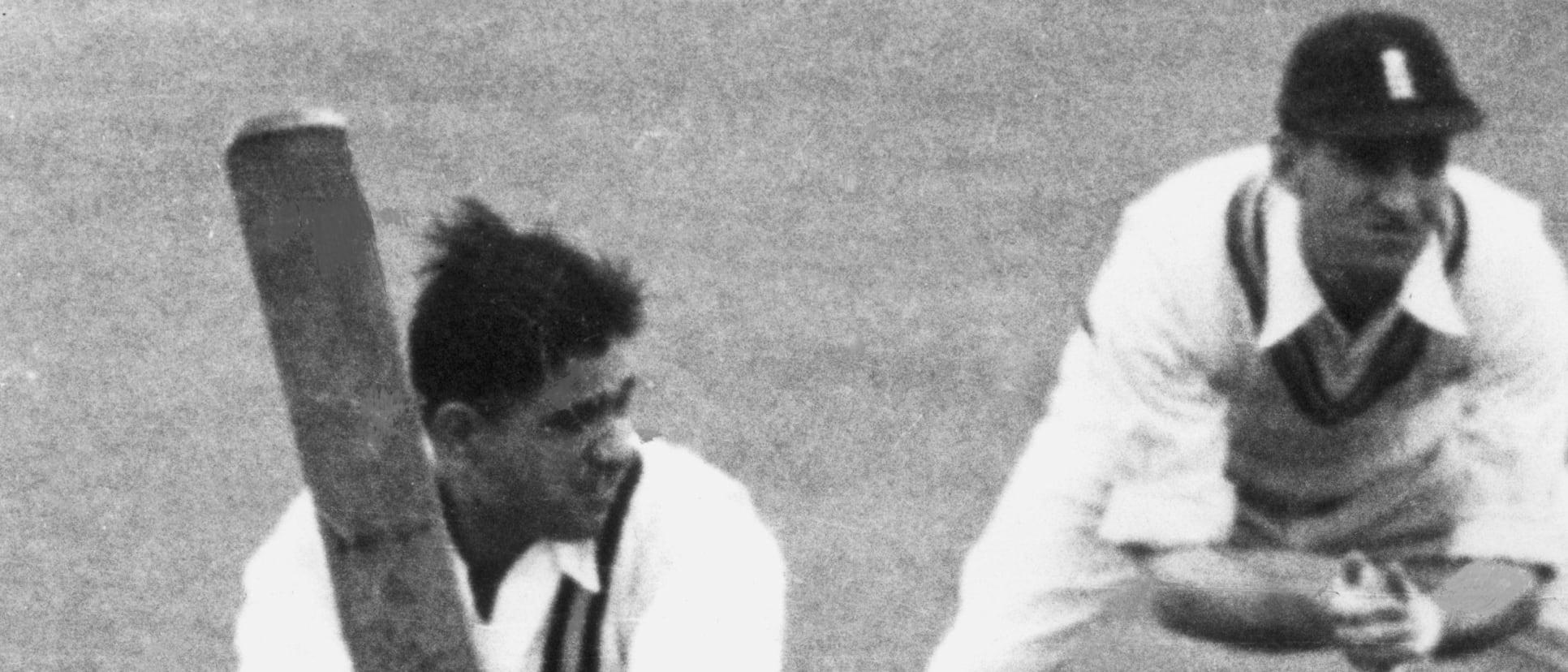The man behind the 'Mankad'

Born Mulvantrai Himmatlal Mankad, called ‘Minu’ at home and ‘Vinoo’ in school, he found fame and some little fortune as Vinoo Mankad, India’s right-hand batsman and left-arm spin bowler.
The name Vinoo Mankad is a regular in the record books. He was the first Indian to reach 1000 runs and 100 wickets in Tests, taking just 23 matches to get there.
Vinoo Mankad was one half of the opening pair that held the record for the highest first-wicket stand for 52 years. Mankad and Pankaj Roy batted through a complete day in what was then Madras, going on to add 413 runs in 472 minutes against New Zealand in January 1956. Mankad finished that game with a score of 231 – India’s highest until Sunil Gavaskar made 236* against the West Indies in the same city 27 years later.
A few years before, in 1952, he starred at Lord’s, in what has come to be called ‘Mankad’s Test’. Earlier that year, he had been instrumental in India’s first Test win against England at home. Then, in the second Test at Lord’s, he made 72 and 184, while picking up five wickets. The story goes that even the Queen was impressed and let him know when she shook his hand. The name ‘M.H. MANKAD’ was etched on the honours board – twice; he remains one of only three non-English players to feature on both batting and bowling honours boards.
Interestingly, his name might not have been in playing XI at all for that landmark Test. He had earned the displeasure of the selectors and was left out of the touring party, following his decision to take up a professional contract with Haslington Cricket Club in Lancashire, which interfered with selection trials. However, after India fared poorly in the first Test, the selectors changed their mind and the manager was sent to broker peace with the club and cricketer.
There is so much to associate with Mankad. He has batted in every position from No.1 to No.11. He finished his career with five Test hundreds, 11,591 runs and 782 wickets from 233 first-class matches – and might have had more but for the Second World War. He has coached and inspired generations of Mumbai cricketers, including the likes of Sunil Gavaskar and Eknath Solkar.
And yet, years after his passing at the young age of 61, his name taken most often not for these considerable contributions, but in the context of a polarising dismissal.
The original ‘Mankad’ came during India’s second Test in Sydney in 1947. Mankad pulled up in his delivery stride and ran out Bill Brown at the non-striker’s end for backing up too far. It was the second time this happened, the first instance being in a tour game.
MCC, the guardians of the laws of the game, have given their opinion on yesterday's 'Mankad' incident at #IPL2019.
— ICC (@ICC) March 26, 2019
See what their verdict was 👇https://t.co/NzXvPuHkYn
The Australian press criticised it as being against the ‘spirit of the game’ – a complaint still brought out against the dismissal decades later, although the MCC, the guardians of the laws of cricket, have stressed that it is a legitimate dismissal, and indeed a necessary provision.
“For the life of me I cannot understand why,” Don Bradman, the captain during that Test, wrote in his book Farewell to Cricket, defending the Indian. “The laws of cricket make it quite clear that the non-striker must keep within his ground until the ball has been delivered. If not, why is the provision there which enables the bowler to run him out?
“Mankad was an ideal type, and he was so scrupulously fair that he first of all warned Brown before taking any action. There was absolutely no feeling in the matter as far as we were concerned, for we considered it quite a legitimate part of the game.”
In Flying Stumps, Ray Lindwall wrote that these “accusations of bad sportsmanship ... were most unfair to the bowler”.
However, since then, the unfortunate name has stuck to the dismissal.
Gavaskar has been among the loudest campaigners to call it something else – ‘Browned’ is his suggestion. "He has been one of India's all-time great cricketers. Our legend's name should not be spoiled,” he once said.
A round-up of the reaction to Jos Buttler's dismissal last night at #IPL2019 - which side of the debate are you on?https://t.co/0VlnhUZ9Ac
— ICC (@ICC) March 26, 2019
And indeed, among those who knew Mankad, he will always be associated with the best that cricket has to offer.
“His rebellious, straight black hair gleaming, laughter richly present in his deep-seated eyes, he bustles powerfully through his short run and bowls with a thick left arm … By the end of the [1946] tour, there is little doubt that he was the best slow left-arm bowler in the world," wrote John Arlott, the English writer and commentator.
His former team-mate Nari Contractor wrote in the Wisden India Almanack 2017, to mark Mankad’s centenary and induction in the Hall of Fame: “He didn’t have to bowl to stand out. It was his demeanour, his neat attire and, most of all, his alertness that you just couldn’t miss. I have never seem a player so watchful, so agile.
“You can call it cricketing radiance.”
It is this that his well-wishers are trying to keep alive.